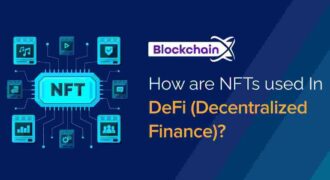The rise of Decentralized Finance (DeFi) has unlocked unprecedented opportunities in lending, borrowing, trading, and yield farming. However, with these opportunities comes a heightened level of risk. From smart contract vulnerabilities to rug pulls and market volatility, DeFi investors face threats that traditional finance often shields against. Enter DeFi insurance, a rapidly growing segment designed to protect crypto assets in an environment where conventional safety nets are largely absent.
Understanding DeFi insurance is essential for anyone looking to safeguard their digital investments while participating in this high-growth, high-risk ecosystem.
Why DeFi Insurance Matters
Unlike traditional finance, where banks and financial institutions often provide deposit insurance and fraud protection, DeFi operates without intermediaries. This decentralization offers autonomy and transparency but also places full responsibility on users. Risks in DeFi include:
- Smart Contract Exploits: Bugs or vulnerabilities in code can lead to theft of funds, as seen in hacks on protocols like Poly Network and Yearn Finance.
- Rug Pulls: Malicious developers can abandon projects after draining liquidity pools.
- Oracle Failures: Faulty external data inputs can cause incorrect liquidations or mispricing of assets.
- Market Volatility: Extreme fluctuations in token prices can trigger collateral liquidations or losses.
DeFi insurance mitigates these risks, providing financial coverage that restores confidence and encourages broader participation in decentralized finance.
How DeFi Insurance Works
DeFi insurance protocols leverage smart contracts and decentralized networks to automate the creation, management, and payout of insurance coverage. The process typically involves:
- Policy Purchase: Users deposit a premium into a smart contract to secure coverage for specific risks, such as smart contract failure or exchange hacks.
- Risk Pooling: Premiums are pooled together to create a fund that can pay claims when insured events occur.
- Claim Submission and Verification: Smart contracts automatically validate claims based on predefined conditions or via decentralized oracles.
- Payouts: Once validated, funds are distributed automatically to policyholders without requiring a centralized authority.
By operating trustlessly and transparently, DeFi insurance protocols ensure that coverage and payouts are predictable, auditable, and decentralized.
Popular DeFi Insurance Platforms
Several platforms are leading the way in providing crypto asset protection:
- Nexus Mutual
Nexus Mutual is one of the most recognized DeFi insurance providers, offering coverage against smart contract failures, exchange hacks, and protocol vulnerabilities. Members participate in governance and risk assessment, creating a community-driven insurance model. - InsurAce
InsurAce provides coverage for protocol exploits, stablecoin depegging, and wallet protection. It emphasizes multi-chain support, allowing users to secure assets across different blockchains. - Bridge Mutual
Bridge Mutual offers insurance against stablecoin depegging, exchange hacks, and smart contract failures, enabling users to protect crypto holdings in both DeFi and CeFi ecosystems. - Armor.fi
Armor.fi provides on-demand coverage with no lock-in periods, allowing users to purchase insurance dynamically while interacting with DeFi protocols.
These platforms exemplify the decentralized, automated, and community-driven nature of DeFi insurance, making risk management accessible to anyone in the ecosystem.
Benefits of DeFi Insurance
- Financial Security: Investors can protect their funds against hacking, exploits, and unforeseen protocol failures.
- Confidence to Participate: Knowing that coverage exists encourages users to engage in higher-yield, innovative DeFi strategies.
- Decentralized Governance: Many insurance platforms allow users to participate in claims assessment and fund allocation, aligning incentives and reducing moral hazard.
- Global Accessibility: Anyone with a compatible wallet can purchase coverage, democratizing access to insurance services.
- Transparency: All premiums, payouts, and claim histories are recorded on-chain, ensuring accountability.
By providing these advantages, DeFi insurance helps bridge the trust gap between traditional finance and decentralized ecosystems.
Risks and Limitations of DeFi Insurance
Despite its promise, DeFi insurance is not without challenges:
- Limited Coverage Scope: Not all risks are insurable, and some events (like extreme market crashes) may be excluded.
- Liquidity Risk: Insurance pools rely on available funds; in extreme cases, claims may exceed reserves.
- Smart Contract Vulnerabilities: Insurance protocols themselves are built on smart contracts, which can be hacked or exploited.
- Regulatory Ambiguity: Legal frameworks around DeFi insurance remain undefined in many jurisdictions.
- Cost of Premiums: High-risk coverage may come with significant costs, reducing net yield for investors.
Users must carefully evaluate coverage terms, platform credibility, and community governance before purchasing DeFi insurance.
Case Studies of DeFi Insurance in Action
- Covering Smart Contract Hacks
In 2021, Nexus Mutual provided coverage for a Harvest Finance exploit, compensating affected users automatically. This demonstrated the speed and transparency of decentralized insurance compared to traditional claims processes. - Protecting Stablecoin Investments
During periods of stablecoin depegging, platforms like InsurAce have enabled users to hedge against losses, giving investors confidence to continue using DeFi protocols. - On-Demand Coverage
Protocols such as Armor.fi allow users to purchase temporary coverage while interacting with new DeFi platforms, providing flexibility and risk mitigation for high-risk, short-term trades.
These examples illustrate how insurance mechanisms are integral to sustaining confidence and growth in DeFi ecosystems.
The Future of DeFi Insurance
As DeFi continues to expand, insurance is poised to become a core component of the ecosystem, with several emerging trends:
- Algorithmic Underwriting: Using AI and data analytics to dynamically assess risk and set premiums.
- Cross-Chain Coverage: Expanding protection to multiple blockchain networks to ensure broad asset security.
- NFT and DeFi Integration: Offering insurance for NFT-backed loans, tokenized assets, and hybrid financial products.
- Community-Driven Governance: Increasing user participation in claim approval, premium allocation, and risk evaluation.
- Institutional Adoption: Large investors may integrate DeFi insurance into portfolios, providing stability and credibility to the ecosystem.
These developments signal that insurance will play a critical role in mainstream adoption of DeFi, bridging the gap between innovation and investor protection.
Conclusion
DeFi offers unprecedented opportunities for financial innovation, global access, and programmable finance, but it comes with unique risks that traditional safeguards do not address. DeFi insurance provides a solution, allowing investors to protect funds, manage risk, and participate confidently in decentralized ecosystems.
Platforms like Nexus Mutual, InsurAce, Bridge Mutual, and Armor.fi demonstrate how community-driven, automated, and transparent mechanisms can safeguard users against smart contract failures, hacks, and other unforeseen events.
As DeFi grows in complexity and scale, insurance will be essential for building trust, enabling innovation, and promoting mainstream adoption. For investors navigating this dynamic space, understanding and utilizing DeFi insurance is no longer optional—it is a strategic necessity for long-term success in the decentralized finance revolution.










